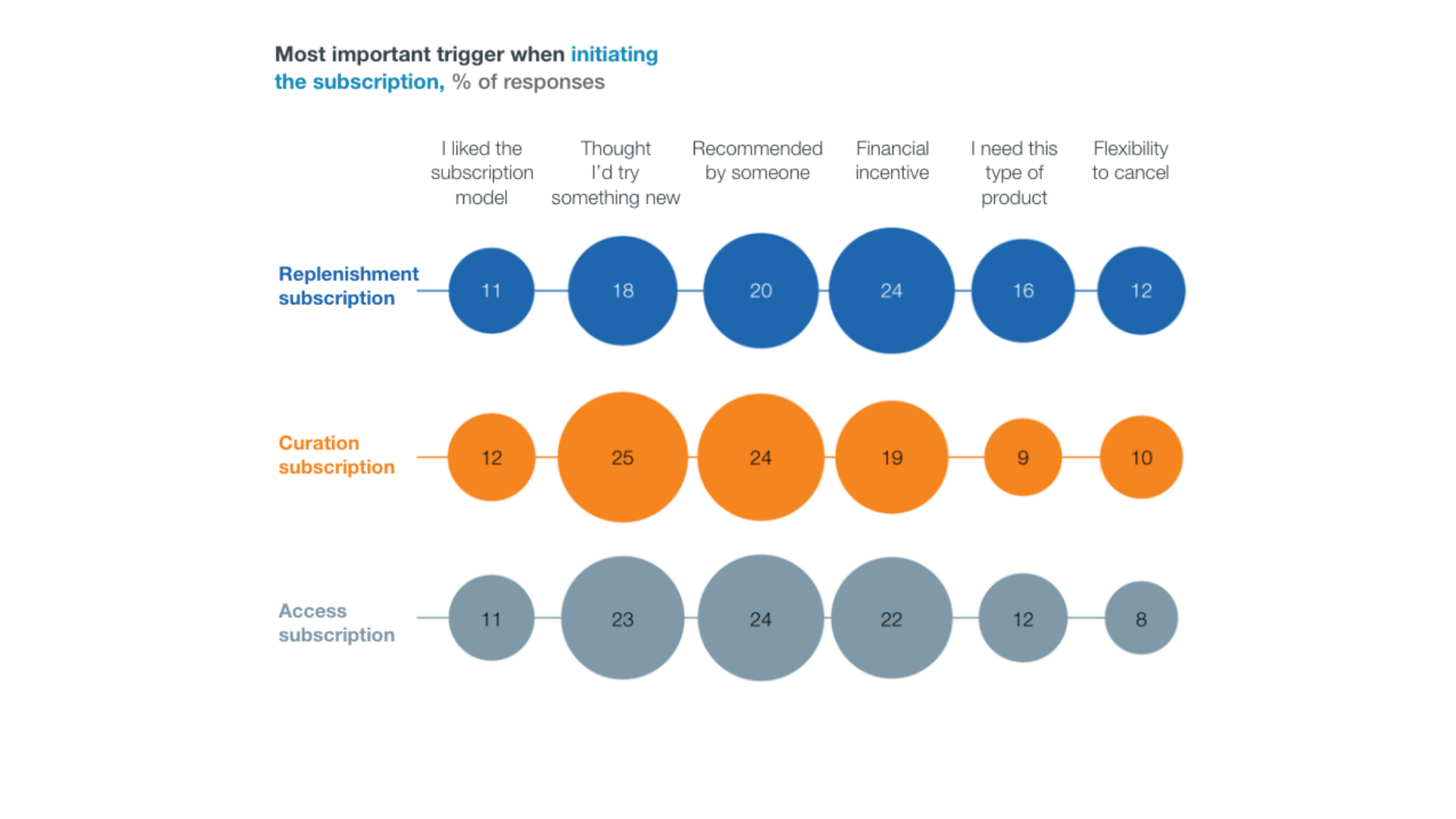The subscription economy is growing significantly. Consumers and businesses are increasingly choosing to pay for use, rather than ownership.
From a financial standpoint, subscriptions are very attractive. Instead of buying a car or software for thousands of euros, you can rent for a low monthly subscription. Renouncing ownership makes it much easier to recover the cost of a product or service through usage.
Let’s now look in more detail at the subscription economy and its size before focusing on a key success point of this business model: its pricing.
What is the subscription economy?
The subscription economy is a business model where goods and services are delivered through a subscription system. On the one hand, the seller provides a product or service to the buyer. On the other hand, the buyer pays for the use of this product or service via a subscription.
The buyer no longer pays for the ownership of a product or service. Payment only takes place if and when the product or service is used. If To stop payment for software or a box containing a product selection, all that is required it to cancel the subscription.
Subscriptions can concern digital products (streaming platforms, SaaS software, video games), but also physical products (product boxes, vehicles, computer equipment).
Most e-commerce subscribers also have streaming media subscriptions." Source: McKinsey, “Thinking inside the subscription box: New research on e-commerce consumers” (2018).
“Subscriptions are an increasingly common way to buy products and services online. Although streaming-media subscriptions have been popular for some time—46 percent of consumers in our survey subscribed to an online streaming-media service, such as Netflix—shoppers are now also turning to subscriptions for consumer goods. Our research indicates that 15 percent of online shoppers have subscribed to an e-commerce service over the past year. Most e-commerce subscribers have streaming-media subscriptions as well.”
McKinsey, “Thinking inside the subscription box: New research on e-commerce consumers” (2018)
The subscription economy by the numbers
According to the study conducted by Telecoming, the global subscription economy revenue in 2021 is around $228 billion. That’s about 30% more than 2020. And by 2025, the average annual growth is expected to be 23%, reaching an annual revenue of $481 billion (approaching 4 billion subscriptions worldwide).
“In 2021 worldwide, there will be 2.228 billion subscriptions, for a global revenue of almost $228 billion, a figure that is up 31% from 2020 ($174 billion). By 2025, this market will have billings of $481 billion, marking an average annual growth rate of 23% over the analysis period, and the number of subscriptions will have increased by 15%, approaching 4 billion worldwide.”
Telecoming, “Subscronomics report 2021”
In a 2018 study, McKinsey shows that in the U.S., the subscription e-commerce market has grown by more than 100% per year, over the past five years.
So we’re talking about a large-scale business model that, while already well established in today’s business, is expected to grow year over year.
The price in subscription business model
We have seen above that the subscription economy is growing quickly. Let’s now look at the key success factors of this business model.
If we go back to the McKinsey study, these are the factors that are most important to trigger a subscription:
- Novelty;
- Referral;
- Financial rewards.

Buyers don’t have a huge interest in buying a subscription because the recurring payment subscription is sometimes an obstacle. They are particularly interested in is the experience and the benefits.
”[…] they want a great end-to-end experience and are only willing to subscribe when automated purchases offer them tangible benefits, such as lower costs or increased personalization […]."
McKinsey, “Thinking inside the subscription box: New research on e-commerce consumers” (2018)
To trigger purchase and avoid churn, personalization of the offer, experience, and pricing are paramount. One of the solutions is to set a price that is tailored to the need of the demand, and less than or equal to the buyer’s perceived value of the good or service.
Today’s environment requires a flexible and configurable billing solution that can handle a wide variety of subscriptions and pay-per-use revenues. Opencell’s business is to help companies achieve a successful recurring business model by providing a flexible, agile and scalable pricing solution. We work directly with our customers to set up innovative pricing.

